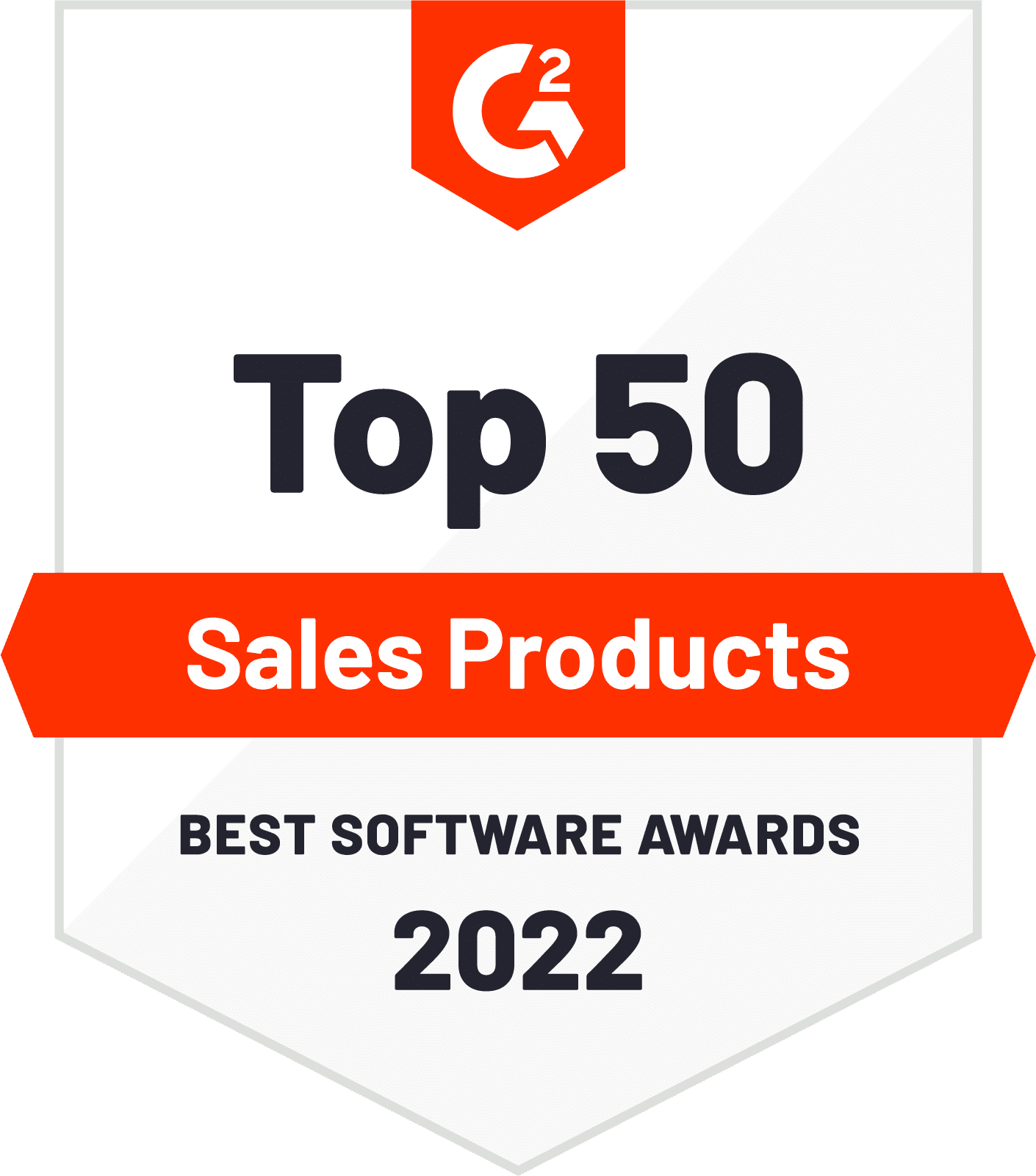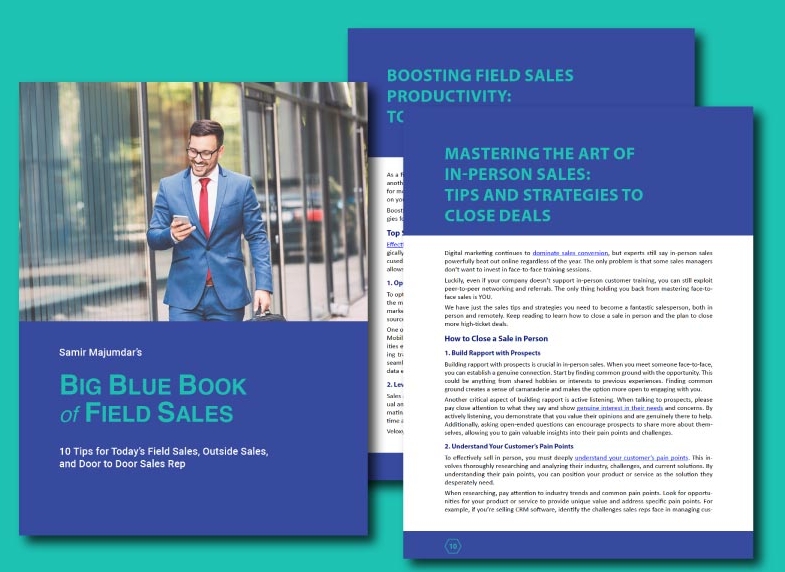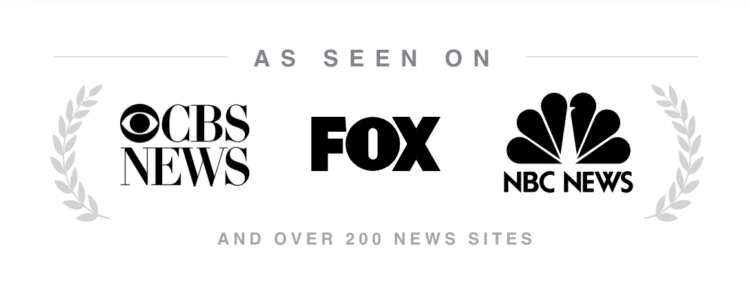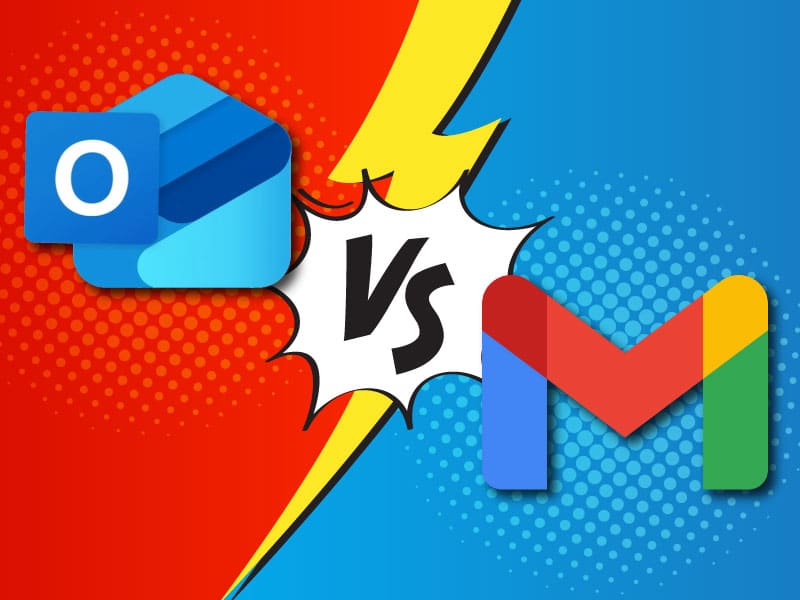
The Ultimate Cold Outreach Guide: Outbound Marketing on Steroids
Cold outreach can sometimes feel like a bad word. (Or two). How can you guide your team to do it effectively? How can you convince them that it can lead to ROI and sales? The reality is, cold outreach is a powerful marketing technique that can unlock untapped potential for your business. Join me as we take a look at
















Did you know that around 77% of sellers cannot efficiently complete their tasks? Lack of productivity can result in lost sales, poor customer relations, and inability to complete everyday tasks.
Many organizations devote a large portion of their budget to tools and programs designed to streamline their operations. However, one of the main hurdles facing CEOs and sales executives is failing to onboard their teams adequately. As leaders, we need to take the time to invest not only in new programs but also in bringing our sales team up to speed.
Don’t get discouraged if your sales team is stuck with an overflowing pipeline of non-converting opportunities. Exploring Veloxy is an easy way to help your team as long as you support them.
What is Salesforce Adoption?
Imagine it – you’ve purchased Salesforce and implemented it into your organization. You’re ready for the program to transform the way your sales team does business. You automatically assume that your time and monetary investment will start to pay off immediately.
However, you don’t see the results you’re expecting. The dashboards and reports within Salesforce are patchy at best. Your sales team has started reverting to off-platform and old ways of completing their jobs.
Your Salesforce data quality will tank without users inputting updated and new data into the program. Users can’t be productive with a program that includes outdated or incomplete data. Eventually, your sales team will lose faith in Salesforce.
Help Your Team Incorporate Salesforce Into Their Daily Routine
Salesforce adoption refers to the extent to which your sales team members have incorporated the program into their daily tasks. It also includes how well the Salesforce admin and dev teams have customized and configured it to fit your needs.
Salesforce user adoption refers to these three main areas:
Why You Should Focus on Salesforce Adoption
Failing to follow through on Salesforce adoption can have numerous adverse effects on your business. Some of the reasons why you should focus on Salesforce adoption include:
The 16 Best Salesforce Adoption Strategies
1. Get Buy-in from the Top Down
If one person is responsible for getting users to adopt Salesforce, your business shouldn’t expect overly optimistic results in the short term. Users need their colleagues and senior-level managers to demonstrate buy-in early.
Let’s not exclude the CEO from this strategy. When your executives are excited about Salesforce’s promises, they’ll take personal responsibility for improving morale and enthusiasm around the platform.
Another key to getting buy-in is to empower end-users to host a lunch and learn. Often, it’s the users who discover Salesforce’s most useful job and industry-specific features.
How to Implement Salesforce Adoption Strategy #1
Why it works: We live in a society that balances leaders and followers. Rest assured, if you have a core of enthusiastic early adopters, you’ll soon have a team of high-performing Salesforce users.
How Veloxy helps: Non-selling activities are the most significant roadblock to adoption. Veloxy helps automate and eliminate 90-95% of data entry, admin tasks, and more.
2. Reporting for Accountability and Success Rate
Before onboarding a new user to Salesforce, have them complete a bi-weekly survey. Ask them how much time they spend manually prioritizing leads or creating new contact records. Tracking and sharing their progress will give users a great sense of accomplishment.
Alongside this reporting, collect and summarize how each user compares to their sales colleagues. Share how other users are succeeding with time savings and pipeline velocity. They’ll ask the leaders in time savings for tips and share their valuable insights with laggards in different categories.
This is one of the quickest ways to improve user adoption across sales teams and the organization.
How to Implement Salesforce Adoption Strategy #2
Why it works: While users may initially be hesitant due to a sense of micro-management or big-brother fears, they will quickly realize the reporting is intended not just to help them, but to acknowledge their successes.
How Veloxy helps: User adoption metrics are centralized into a simple dashboard that sales managers and salespeople can review together. Veloxy helps reassure salespeople that the platform and Salesforce are improving their revenue and overall performance.
3. Invite Marketing and Human Resources
Don’t stop there! Using Salesforce can also benefit customer service, product management, and buying. But this isn’t just about creating a collaborative experience for your sales team. It’s about creating a collaborative sales experience for your customers.
As we found in our State of Field Sales Survey, most buyers want a personalized, value-added buying experience. One way to achieve this is by inviting other personnel resources into the sales process.
Customers don’t want to speak to one person every single time. If they have a question about technical specifications, invite a product manager or engineer to the correspondence. This will improve CSAT scores and the salesperson’s reputation as an advisor and partner in success.
How to Implement Salesforce Adoption Strategy #3
Why it works: Trust is a big part of the game, and the less your buyers can question your consultation, the better. Inviting more players into the sales process helps in this regard.
How Veloxy helps: With a centralized view of each account and contact, Veloxy users can quickly review sales collaboration efforts before meeting with their customers.
4. Engage with the Trailblazer Community
According to Salesforce, when you’re an early adopter who maximizes the functionality of their platform, you’re not just a high performer—you’re a Trailblazer!
Salesforce’s online Trailblazer Community is where users can ask troubleshooting questions, answer other users’ inquiries, request future features, and more. All humans long for a sense of community, and if you’re looking for a strategy to improve adoption, this one is a dark horse.
In addition to sharing struggles and successes, Salesforce users have made long-time friends and connections in the Trailblazer Community. In many cases, users have found customers. Lastly, Salesforce encourages users to join everyone at Dreamforce to meet each other in person.
How to Implement Salesforce Adoption Strategy #4
Why it works: It replaces the stigma that Salesforce is a mere platform or tool because it’s also a community of like-minded sales professionals.
How Veloxy helps: It’s common for users to ask for help streamlining or automating Salesforce in the Trailblazer community. You can make a quick friend by suggesting a trial of Veloxy!
5. Create a Salesforce Training Folder
Once a company starts reaping the benefits of Salesforce and Veloxy, it must hire more salespeople! This means more Salesforce users who may or may not have experience with the platform.
There’s no better time to start documenting all onboarding and training materials. Our customers follow the best practice of centralizing all materials in a single accessible folder within their network. Videos, how-to guides, and lunch and learn schedules are standard content in these folders.
By creating this user destination, you will be a hero to your Salesforce users and look really good in the eyes of your CEO, CRO, and CFO.
How to Implement Salesforce Adoption Strategy #5
Why it works: Binders and filing cabinets are a thing of the past. Keep all content in one location to ramp up new users and help them generate revenue faster and more efficiently.
How Veloxy helps: Thanks to Veloxy’s Salesforce automation, several manual processes that require training are removed from the user’s responsibility, keeping them on-task and engaged with customers.
6. Design a Before and After Document
This may be the easiest of the ten strategies. As you collect data on Salesforce usage, pick out the five to ten eye-popping KPIs that convey the platform’s before-and-after benefits.
How many hours was your team spending on data entry before Salesforce?
How much shorter was the average sales cycle after Salesforce?
How many people exceeded quota before and after Salesforce?
Having just a handful of these numbers presented in an eye-grabbing way on a single piece of paper can go a long way to guaranteeing adoption at your company. Work with your graphic design department to throw something together.
How to Implement Salesforce Adoption Strategy #6
Why it works: A picture is worth a thousand words. Get the point across why Salesforce adoption works without having to say anything. You’ll be surprised how fast it works.
How Veloxy helps: When you deploy Veloxy alongside Salesforce, two to three numbers can be tied to benefits, including time-savings at night and on weekends.
7. Recognize the High Performers
If quota crushers and customer satisfiers are acknowledged in sales meetings, why not Salesforce adopters?
Being hyper-efficient and productive with your day is something to be celebrated. Salespeople who have succeeded in life have learned from their preceding high-performers. Recognizing the top users of Salesforce is another way to leave breadcrumbs.
Review the reports above to discover your high performers, and be sure to share these acknowledgments with the C-suite.
How to Implement Salesforce Adoption Strategy #7
Why it works: Most users must wait for recognition from an uptick in sales or CSAT scores. By creating another source of achievement, you can improve morale faster.
How Veloxy helps: The more salespeople use Veloxy, the faster and higher their Salesforce performance metrics will rise. Veloxy helps users maximize Salesforce usage from the comfort of their inbox or smartphone.
8. Track Data Quality and Sales Intelligence
Salesforce doesn’t necessarily guarantee data quality and accuracy. Relying on users to accurately type in their leads’ names and contact information is definitely not a best practice.
Using B2B databases like ZoomInfo can be a helpful remedy; however, leads and contacts can change email addresses or jobs without notice. With all this being said, tracking and maintaining data quality and account intelligence is extremely difficult.
This is where using one or more Salesforce AppExchange apps can be helpful. Apps on your smartphone or integrated with your inbox can automatically detect changes in every contact’s correspondence and news moments, thereby improving data quality and buyer signals over time.
How to Implement Salesforce Adoption Strategy #8
Why it works: Placing the responsibility of data quality and real-time insights on the shoulders of salespeople is not the best practice. Be sure to take the necessary steps to automate Salesforce data and intelligence.
How Veloxy helps: Veloxy automatically updates contact records when a change is detected in an email or an incoming phone call. Furthermore, it centralizes sales intelligence from multiple sources, including social media.
9. Encourage AppExchange Window Shopping
Forcing users to adopt Salesforce and follow rigid guidelines doesn’t always work. Empowering all users to take an active role in improving their adoption and the adoption of the company is a much better approach.
One of the most popular paths to empower users is to encourage them to browse Salesforce’s AppExchange app store. This store is filled with apps that enhance the user experience of Salesforce by function, role, department, and industry.
There are 1,000s of apps on the AppExchange. If you empower each salesperson to choose and trial one app, how much better off will your adoption rates look this time next year?
How to Implement Salesforce Adoption Strategy #9
Why it works: Users want an active role in improving their adoption of Salesforce, let alone their colleagues’ adoption. Incorporate them in the decision-making process.
How Veloxy helps: Veloxy is a five-star application on AppExchange and is extremely popular amongst field sales reps. Users can expect to have their annual subscription paid off in one to three months.
10. Buy a Salesforce Trophy
I once worked at an organization that struggled with Salesforce adoption. Many of the sales reps were old-fashioned and stuck in the process of spreadsheets and Rolodex cards.
As I walked by one of the higher performers’ desks, I noticed a large rooster statue on his desk. He told me it was for satisfying the most Salesforce KPIs last month. I thought this quite strange, but once other sales reps won the rooster, it became a friendly and fun competition.
You don’t have to buy the same rooster statue. Instead, inform your team about the friendly competition and have them agree on a trophy. You won’t regret it.
How to Implement Salesforce Adoption Strategy #10
Why it works: This is the perfect way to help staff think of user adoption as a friendly competition, not a metric addressed during performance reviews.
How Veloxy helps: Salesforce has a fixed number of out-of-the-box features. Veloxy unlocks over 30 new features that were inspired by salespeople. You’ll have a hard time telling them to put down their phones because they’re likely using our software.
11. Establish Clear Adoption Goals
Setting specific, measurable goals is crucial for successful Salesforce adoption. Clear objectives guide your team’s efforts and provide a roadmap for achieving success.
Start by applying the SMART criteria (Specific, Measurable, Achievable, Relevant, Time-bound) to formulate targeted and attainable goals. This shared vision fosters commitment and ensures everyone works towards the same end.
When everyone knows the end goal and believes it’s within reach, they’re more likely to put in the effort needed. Early stakeholder involvement is critical, turning these goals into a collective mission that fuels commitment and ensures a successful Salesforce implementation.
How to Implement Salesforce Adoption Strategy #11
Why it works: Clear goals provide direction and motivation, making it easier for the team to see progress and stay committed to Salesforce adoption.
How Veloxy helps: Veloxy helps track and measure progress towards your goals, ensuring your team stays on target and achieves their adoption objectives. With Veloxy, you can easily monitor key metrics and make necessary adjustments, keeping your Salesforce adoption strategy on the right path.
12. Design an Implementation Timeline
A structured implementation timeline is crucial for a smooth Salesforce adoption process. Think of it as a roadmap guiding your team from initial setup to full adoption.
A well-crafted timeline, ideally spanning six months, provides a structured yet flexible framework that fosters confidence and enthusiasm among users. This period allows for quick wins and sustained support, ensuring users have a positive first impression and build trust in the platform.
You can address potential challenges early and maintain momentum by breaking down the adoption process into manageable phases. The timeline should include specific milestones and deadlines to keep everyone on track. Regular check-ins help monitor progress and allow you to make necessary adjustments based on user feedback.
This iterative approach keeps the implementation on schedule and demonstrates your commitment to user success.
How to Implement Salesforce Adoption Strategy #12
Why it works: A clear timeline provides structure and helps manage expectations, ensuring a smoother transition and higher adoption rates. When users see a plan in place, they’re more likely to trust the process and stay engaged.
How Veloxy helps: Veloxy’s automation tools streamline the onboarding process, making it easier to adhere to the implementation timeline and achieve quick wins. With Veloxy, you can automate many repetitive tasks, allowing your team time to focus on learning and integrating Salesforce into their daily routines.
13. Empower Users Through Tailored Training Programs
Tailored training programs are essential for empowering users and ensuring practical Salesforce usage. Generic training often misses the mark because it doesn’t address each role’s specific needs and tasks.
Understanding these unique needs allows you to develop training initiatives that resonate with your team and enhance their CRM usage.
Imagine how much more effective your sales team will be when their training is customized to their daily activities and challenges.
This approach reduces the risk of overwhelming users with unnecessary information and focuses on what’s most important for their success. Tailored training shows your team that you’re invested in their professional development, boosting morale and commitment to Salesforce adoption.
How to Implement Salesforce Adoption Strategy #13
Why it works: Tailored training ensures users receive relevant information, reducing overwhelm and increasing their ability to leverage Salesforce effectively. When training directly applies to their roles, users are more likely to engage with the material and integrate what they’ve learned into their daily workflows.
How Veloxy helps: Veloxy integrates seamlessly with Salesforce, providing users with intuitive tools and resources that enhance their training and overall experience.
14. Streamline User Experience
Optimizing the user experience is vital to driving Salesforce adoption. Users who find the interface intuitive and tailored to their needs are more likely to engage regularly.
Customizing page layouts for different roles ensures everyone can access necessary information without clutter. Decluttering interfaces and removing redundant fields make Salesforce more accessible and efficient.
Personalizing dashboards to display relevant data for each user enhances their ability to make informed decisions quickly. Tailored dashboards save time and improve the overall user experience, helping users feel more in control and satisfied with the platform, which fosters higher adoption rates.
How to Implement Salesforce Adoption Strategy #14
Why it works: A streamlined user experience reduces frustration and makes it easier for users to complete tasks, increasing adoption rates. When the interface is clean and intuitive, users are less likely to revert to old habits and more likely to embrace Salesforce as a valuable tool in their daily operations.
How Veloxy helps: Veloxy enhances the user experience by providing a centralized view of relevant data and automating repetitive tasks, making Salesforce more user-friendly.
15. Integrate Feedback Loops
Creating a culture of continuous feedback is essential for successful Salesforce adoption. When users know their opinions matter, they’re more likely to engage with the platform. Regular user surveys and established feedback channels ensure that Salesforce evolves to meet user needs and address issues promptly.
By integrating feedback loops, you’re actively involving users in the improvement process. This approach fosters a sense of ownership and responsibility, making them feel valued and heard. Acting on feedback and making necessary adjustments to the platform and training programs builds trust and ensures Salesforce aligns with daily workflows and goals.
How to Implement Salesforce Adoption Strategy #15
Why it works: Continuous feedback keeps the platform aligned with user needs, fostering a positive adoption experience. When users see that their feedback leads to tangible improvements, they’re more likely to stay engaged and committed to using Salesforce effectively.
How Veloxy helps: Veloxy’s user-friendly interface simplifies gathering and acting on feedback, ensuring Salesforce continues to meet team needs. Veloxy provides actionable insights, helping you make informed decisions that enhance the user experience.
16. Foster a Collaborative Salesforce Culture
A collaborative culture is vital for Salesforce adoption. When team members feel part of a supportive community, they’re more likely to engage with the platform.
Encouraging open discussions about Salesforce usage allows them to share experiences, challenges, and tips, which is invaluable. Sharing success stories and best practices highlights what works and provides practical insights for others.
Promoting transparency in Salesforce usage builds trust. When everyone understands the benefits and sees peer successes, it fosters ownership and commitment. Encouraging collaboration means team members support each other, making the adoption process a shared journey rather than a directive.
This sense of community can significantly boost morale, engagement, and overall performance.
How to Implement Salesforce Adoption Strategy #16
Why it works: A collaborative culture fosters ownership and community, making Salesforce adoption a shared effort. When team members see peer successes and feel supported, they’re more likely to embrace and use Salesforce effectively.
How Veloxy helps: Veloxy’s collaborative tools and features simplify sharing insights, supporting each other, and working together to maximize Salesforce benefits. Veloxy fosters a more engaged and high-performing team.
Deploy These Salesforce Adoption Strategies to Improve Your Organization
While Salesforce is a powerful tool that can do amazing things for your organization, we can’t expect these changes to happen smoothly overnight as leaders. Salesforce adoption requires 100% buy-in from CEOs and sales executives to happen. A high rate of adoption results in a positive user experience, increased ROI, and better data quality.
At Veloxy, we aim to help you automate dozens of Salesforce tasks and make adopting Salesforce happen faster. Explore everything Veloxy has to offer by checking out our Salesforce mobile app or our Salesforce inbox extension.
FAQ on Salesforce Adoption Strategies
How can we measure the success of our Salesforce adoption strategy?
You can measure the success of your Salesforce adoption strategy by tracking key metrics like login frequency, time spent on Salesforce, and completed actions. Another method is to analyze user adoption rates through Salesforce dashboards and compare performance metrics post-training.
What role do Salesforce admins play in adoption strategies?
Salesforce admins play a crucial role in adoption strategies by providing training, ongoing support, and resolving technical issues, acting as adoption ambassadors to ensure effective platform utilization and alignment with organizational needs.
How does gamification contribute to Salesforce adoption?
Gamification contributes to Salesforce adoption by making it fun through competition and rewards, which align with the competitive nature of salespeople and encourage proper use of the platform. This fosters user engagement and the development of good habits.
Why is data quality important in Salesforce adoption?
Data quality is important in Salesforce adoption because it ensures reliable reporting and informed decision-making, influencing revenue and trust in Salesforce reports for strategic decisions.
Can you give examples of how to foster a collaborative Salesforce culture?
To foster a collaborative Salesforce culture, consider leadership modeling effective use, promoting transparency, identifying adoption champions, encouraging team discussions and success sharing, and establishing Salesforce user groups for knowledge exchange. These strategies can help create an environment that values collaboration and teamwork.